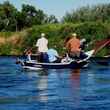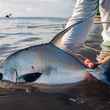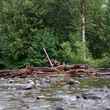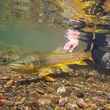On Friday, May 31, the EPA will close the currently open public comment period regarding the feasibility of large scale, open pit mining in the Bristol Bay region of Alaska (UPDATE: The EPA has extended the public comment period to June 30th). In late April, the EPA released an updated draft of its assessment of risks related to mining operations in this sensitive salmon habitat. The assessment made it clear that mining proposes grave risks to the salmon rivers of Bristol Bay and that, even without any accidents or failures, mining operations in Bristol Bay would result in the loss of over 24 miles of salmon streams and the destruction of almost 5,000 acres of wetland habitat.
As we reported earlier this month, the results of a recent study by researchers at the University of Alaska estimated the annual value of Bristol Bay's salmon fishery. The study determined the combined value of the bay's commercial, subsistence and recreational fisheries to be worth $1.5 billion annually, a number which seriously challenges even arguments which weight solely the economic benefits of mining.




























